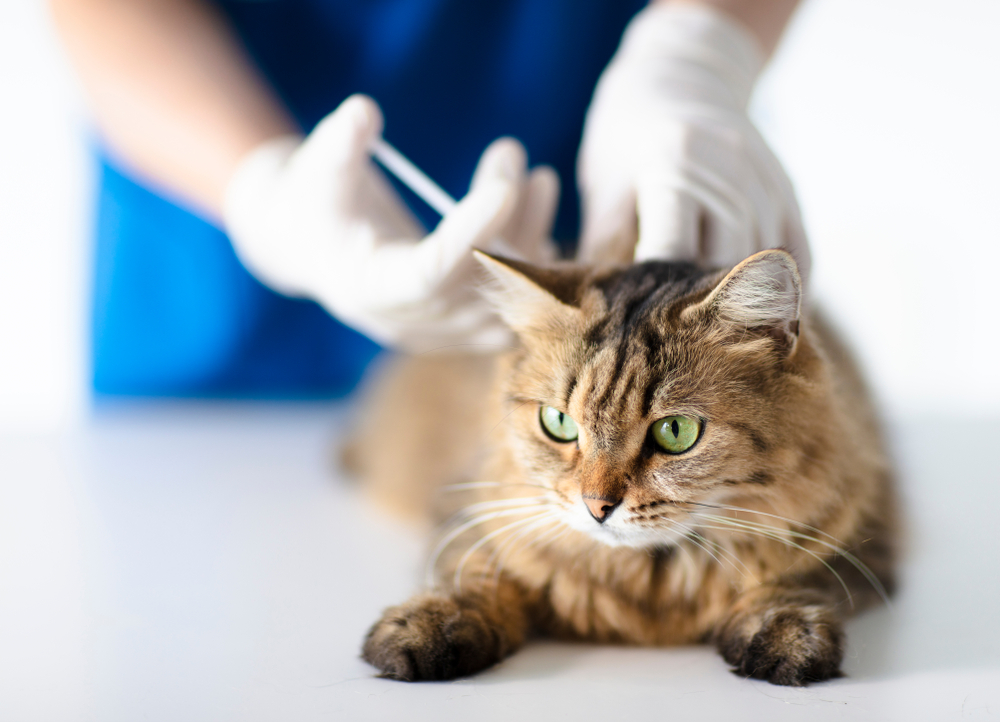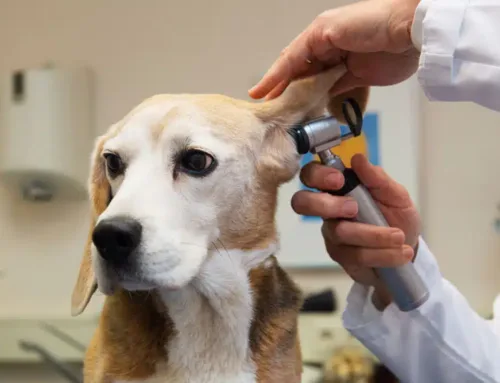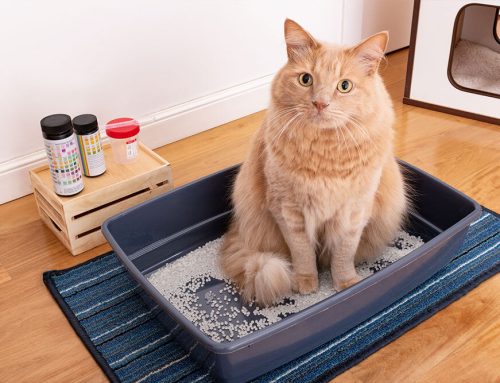The average lifespan of an indoor cat in the U.S. is 13 to 17 years, according to the ASPCA. While we certainly see cats older than 17, the oldest cats live only a fraction of the 79 years that the average American lives. This means that cats age rapidly, and missing one annual exam could mean missing important information about your cat’s health.
It might help to consider your cat’s age in human years. At one year of age, your cat compares to a 16-year-old human, and at 2 years, he’ll compare to a 24-year-old. For each year after that, add four years to calculate your cat’s age in human years. For example, if your cat is 10 years old, in human years, he’d be 56 years old.
A 56-year-old human has likely been to the physician for an annual physical exam every year. A 10-year-old cat, on the other hand, has probably missed quite a few check-ups. We know this, because according to a study conducted by Bayer Health and the American Association of Feline Practitioners (AAFP), of the 74 million cats living in American homes, 52%—more than half—are not receiving regular veterinary care.
Why are regular exams so important for cats?
When you live with your pet, you can easily miss subtle changes in his health or behavior. Over time, these subtle changes may add up to a big change, but because you see him every day, it may not register. This most commonly occurs with a pet’s weight. Half a pound here and half a pound there isn’t too noticeable, but when your eight-pound cat suddenly weighs 10 pounds—imagine gaining one quarter of your own body weight—it’s serious.
A 2018 clinical study performed by the Association for Pet Obesity Prevention found that 25.7% of cats were classified by their veterinarians as overweight, and a staggering 33.8% of cats were classified as obese. That’s why one of the first things we’ll do at your cat’s annual exam is measure his current weight. Extra pounds are detrimental for your cat’s health in many ways, including:
- Added stress to bones and joints, which leads to orthopedic disease
- Difficulty reaching some areas to properly groom
- Chronic inflammation
- Reduced life expectancy
- Diminished quality of life
- Increased incidence of diabetes
- Increased cancer risk
Physical exams for cats
Cats are notoriously good at hiding pain and illness, because their instincts tell them that the weakest in the pride is the first to be hunted. At your cat’s annual exam, we will establish his weight and perform a complete physical, looking for subtle signs of pain and illness you may be missing.
The physical exam is the “hands on” part of your cat’s visit. Our veterinarians will check him from the tips of his ears to the tip of his tail. Because 85% of pets over age 3 have dental disease, we’ll check his teeth and make recommendations for treatment. Dental disease is a painful, chronic inflammation, which decreases his quality of life.
We’ll also listen to your cat’s heart for murmurs or unusual rhythms, which signal heart disease, and listen for abnormal lung sounds.
We’ll palpate your cat’s joints, flexing and extending them to check for osteoarthritis. Spinal arthritis is common in older cats, so we’ll also palpate along his spine. Upwards of 90% of cats over age 12 have radiographic evidence of osteoarthritis, and if your cat falls in this category, we’ll want to start treatment to alleviate his discomfort. Again, cats often show their pain in subtle ways, and your cat doesn’t have to be limping to be in pain.
Finally, we’ll palpate your cat’s abdomen, checking that all his major organs feel normal.
Next steps in a cat’s exam
After the physical exam is complete, we’ll discuss the results and make recommendations for the next steps. We always recommend blood work for senior cats for information we can’t get from a physical exam, such as blood cell levels, kidney and liver function, blood sugar, and thyroid hormone levels. These values are important because as they age, cats are more prone to illnesses, such as:
- Hyperthyroidism — An overactive thyroid causes weight loss despite a voracious appetite, and increases nighttime activity, such as howling.
- Chronic kidney disease — As cats age, their kidneys may stop functioning properly; cats drink a lot of water and urinate large amounts, and their kidneys become less and less able to filter toxins from the blood.
- Diabetes — Increased blood sugar levels cause increased appetite, increased water intake, and increased urination.
Maintenance for cats

After our diagnostics are complete, we’ll discuss a preventive maintenance plan for your cat. We always consider your pet’s lifestyle when it comes to disease prevention, because a strictly indoor cat will have different needs than a cat who goes outdoors. If any vaccines are due, we’ll catch him up on those. We’ll also talk about parasite control, since fleas, ticks, and mosquitoes transmit life-threatening diseases and we want to ensure your cat is adequately protected.
When your lifespan might be 17 years, your health status can change quickly. Cats up to 8 years old should visit our team at least once per year, and cats over age 8 should be examined more depending on their health status. When your cat misses a regular exam, we don’t have the chance to catch illnesses early in their progression. If it’s been more than a year since we’ve seen your four-legged family member, give us a call so we can get him on the books. As the old proverb goes, an ounce of prevention is worth a pound of cure.








Leave A Comment